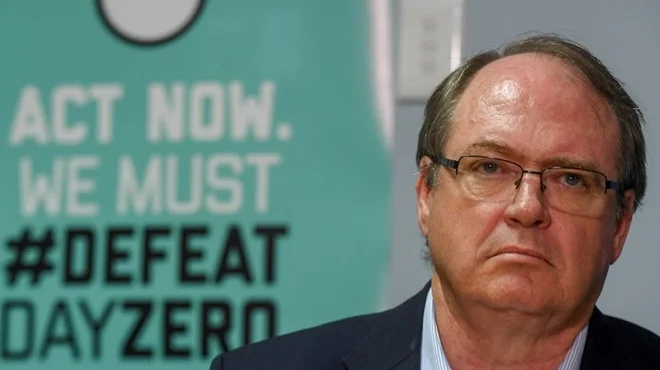The City of Cape Town’s desalination plant at the V&A Waterfront is set to come online in the second half of March, Deputy Mayor Ian Neilson announced on Thursday at a press conference to reiterate the need to keep saving water to avoid #DayZero.
The V&A plant is expected to add two million litres of water a day to the city’s water supply system and forms part of a longer-term plan to build water supplies that do not rely on dams that are vulnerable to droughts.
The current average level of dams that supply Cape Town is around 24% due to a prolonged drought in the region.
Three desalination plants are currently being constructed for Cape Town.
In addition to the V&A plant, one at Strandfontein is expected to come online with two million litres a day later in March, and then up to seven million litres a day by May. Another one at Monwabisi is expected to also provide seven million litres a day. Those temporary plants involve the purchase of water from the private companies which built the plants.
Drilling continues at the Cape Flats Aquifer and negotiations are underway to get access to drill more holes near the Cape Town International Airport.
The total yield from aquifers is expected to be 83 million litres a day.
Another 50 million litres a day is expected to be put into the city’s water system from the Table Mountain Group Aquifer by June. Caution is being exercised in this region due to environmental concerns, but two holes have already been drilled near the Steenbras Dam.
‘Atlantis is the best place to live in Cape Town’
The aquifer in Atlantis along the West Coast, past Blouberg, is already producing 12 million litres a day and this is expected to increase to 20 million litres by October.
“Atlantis is the best place to live in Cape Town because it now has a fully independent water supply,” said Neilson.
The Zandvliet water recycling treatment plant will produce an additional 10 million litres per day by June this year.
A number of high yielding springs are also being accessed and the spring at Oranjezicht has been diverted to the Molteno reservoir to put between one and two million litres a day into it.
The transfer of water from private dams from the Groenkloof Water Users Association into the Steenbras Dam is continuing.
However, the City still has to reach a reduced daily consumption target of 450 million litres of water a day to fall in line with the Department of Water and Sanitation’s allocation, which significantly reduced what the city is allowed to extract from dams in the region.
The department set a limit of 174 700 million litres for the year. Divided by 365, that means the maximum consumption should be 489 million litres a day, said Neilson.
He said the reduction was based on the city’s average use over five years. Because it had already started reducing consumption and had introduced restrictions, it was, in a way, a victim of its own reduction measures when the department calculated what it was allowed to use, Neilson added.
‘Incredible achievement’
He said that Day Zero remained set at July 9, based on current water availability and consumption, and that the winter rainfall would be closely monitored.
The trigger point for declaring Day Zero remained when the average dam levels reach 13.5%.
He said Day Zero did not mean that there would be no water on that day, but would mark the moment when they would start measures to stretch the amount of water.
This would mean shifting from getting water from taps, to getting water from tankers at Points of Distribution (Pods) set up around the city.
The current water restriction level is 6B, which means consumers are limited to 50 litres per person per day, unless they have written permission from the City council to use more.
Neilson said Capetonians had contributed to the “incredible achievement” of reducing usual February consumption from 1 200 million litres per day to just under 600 million litres per day.
But the Day Zero date would stay in place, he said.
“We are not shifting that date by any substantive means at this time.”
